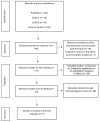Network Meta-Analytical Investigations of the Performance of HIV Combination Prevention Strategies for Indigenous Populations
- PMID: 41012673
- PMCID: PMC12474319
- DOI: 10.3390/v17091247
Network Meta-Analytical Investigations of the Performance of HIV Combination Prevention Strategies for Indigenous Populations
Abstract
Background: Indigenous populations worldwide face a disproportionate burden of HIV due to structural inequities, cultural marginalization, and limited access to health services. Despite growing recognition of the need for culturally adapted responses, the effectiveness of combination HIV prevention strategies in these communities remains underexplored.
Objectives: This study aimed to evaluate and compare the effectiveness of multiple HIV prevention strategies among Indigenous populations using a systematic review and network meta-analysis (NMA), to inform equity-oriented public health interventions.
Methods: Following PRISMA-NMA 2020 guidelines, a comprehensive literature search was conducted across four databases (PubMed, SciELO, LILACS, Science Direct) for quantitative studies published between January 2000 and June 2025. Eligible studies evaluated HIV prevention interventions among Indigenous populations and reported risk or odds ratios. A frequentist NMA model was used to calculate effect estimates (OR, 95% CI) and SUCRA rankings for seven types of interventions, combining biomedical, behavioral, and structural approaches.
Results: Four high-to-moderate quality studies enclosing 4523 participants were included. The most effective intervention was home-based counseling and testing for HIV, followed by medical consultation combined with HIV testing. Standalone testing, while effective, was significantly less impactful than when combined with culturally sensitive educational strategies. Information-only strategies showed the least efficacy. The SUCRA analysis ranked home-based testing highest (45.17%), highlighting the importance of decentralization, community participation, and intercultural mediation.
Conclusions: Culturally adapted combination prevention strategies-especially those integrating home-based testing and counseling-are more effective than isolated biomedical interventions in Indigenous populations. These findings reinforce the urgent need for participatory, context-driven public health responses that center Indigenous knowledge, reduce stigma, and expand equitable access to HIV care and prevention.
Keywords: HIV prevention; SUCRA; combination prevention; home-based counseling; indigenous populations; intercultural health; network meta-analysis.
Conflict of interest statement
The authors declare no conflicts of interest.
Figures




References
-
- Coimbra C.E., Santos R.V., Welch J.R., Cardoso A.M., De Souza M.C., Garnelo L., Rassi E., Follér M.-L., Horta B.L. The First National Survey of Indigenous People’s Health and Nutrition in Brazil: Rationale, Methodology, and Overview of Results. BMC Public Health. 2013;13:52. doi: 10.1186/1471-2458-13-52. - DOI - PMC - PubMed
-
- Ministério da Saúde Boletim Epidemiológico—HIV/Aids 2022—Departamento de HIV, Aids, Tuberculose, Hepatites Virais e Infecções Sexualmente Transmissíveis. [(accessed on 1 July 2025)]; Available online: https://www.gov.br/aids/pt-br/central-de-conteudo/boletins-epidemiologic....
Publication types
MeSH terms
Grants and funding
LinkOut - more resources
Full Text Sources
Medical

